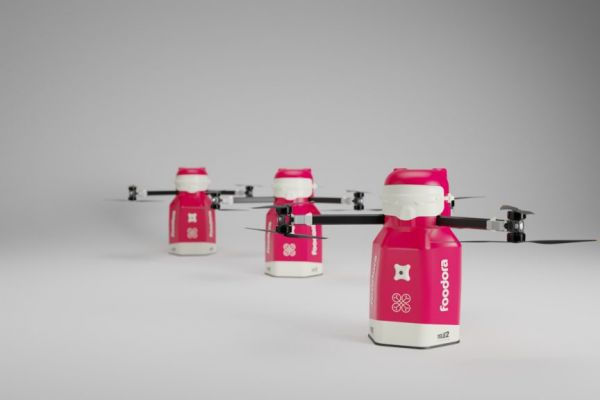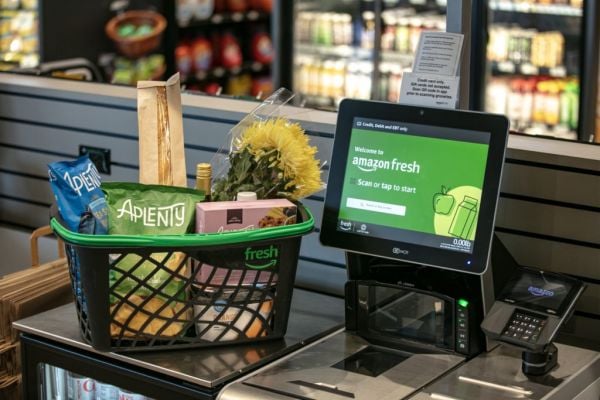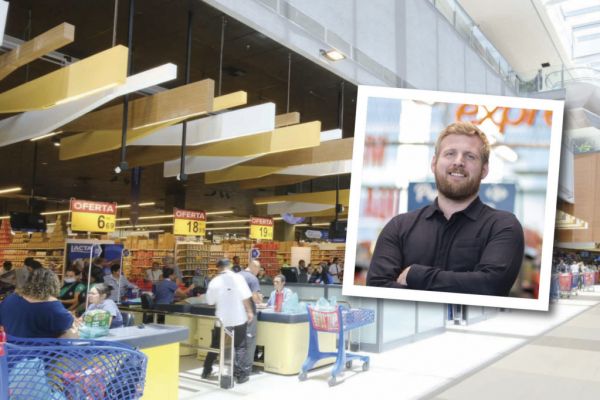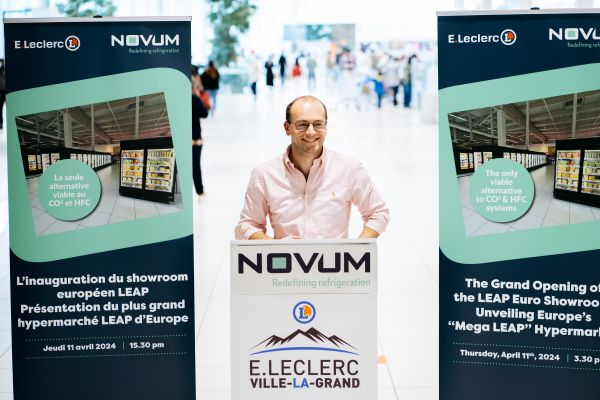How will the Internet of Things (IoT) and next generation technologies shape how consumers interact with products, services and business models?
Global strategy and consultancy firm Accenture is seeking to find out, through its Industry X.O framework, which seeks to provide insight on how manufactures and suppliers, particularly those in consumer goods, can best position themselves for rapid, flexible technological adoption.
According to the group, the food and beverage industry alone has the potential to unlock more than €60 billion in additional value by harnessing machine learning, blockchain, digital twin technologies, and autonomous vehicles and robots.
At the recent Consumer Goods Forum Global Summit in Vancouver, a notable addition to Accenture's stand was a Drinkworks Home Bar, a new intelligent solution from Keurig Green Mountain and Anheuser-Busch InBev that offers a variety of cocktails based on ultra-personalised situations. While sadly not operational during the Summit – this was, after all, a business gathering – the device offers a vision as to how manufacturers can embrace smart, connected products that tap into specific consumer needs.
ESM caught up with Brian Doyle, managing director of Acceture's Connected Product Innovation practice, to discuss the opportunities open to brands seeking to capture new revenue streams in what is likely to become a rapidly-evolving connected products market.
ESM: How is Accenture helping companies unlock the potential in the IoT sector?
Brian Doyle: For us, we're really at the start of the journey. For the consumer goods industry, what we're really doing is helping companies grow by setting a vision for a new future, and unlocking a more expansive view of the opportunity space.
This may involve redefining a category in a different way, or starting a journey towards developing more relevant branded products.
ESM: Tell me about what you are hoping to achieve with he Industry X.O framework?
Brian Doyle: With Industry X.O, we're really trying to help companies seize the disruption opportunity that comes from both IoT connected products and experiences, as well as really informing their growth strategy. In the future, the strategic opportunities may go beyond the traditional category definition, so we need to engage with companies in terms of setting a new innovation strategy.
Most consumer goods companies are pretty enterprising and very product and brand centric, and often lack the capabilities to get a more holistic understanding of consumer needs. If you think about the time it takes to first of all convince leadership to assemble the capabilities to do that, and then the time it takes to actually implement it, it's just too long in most cases. Also, in a lot of cases, innovation has to stay within the confines of a particular brand. So we need to work with them to think more broadly about finding innovation.
ESM: The Drinkworks dispenser that was on display at the Consumer Goods Forum Global Summit hints at the possibilities of IoT technology for brands. Where do you see the opportunities?
Brian Doyle: I would say first and foremost, that it's the idea of a 'living product'. It's animated, it's intelligent, and it's going to do more for you than what it could do if it was just a static offering, whether that's a case of improving the convenience or offering greater personalisation. They key thing is, however, that that level of personalisation is getting better over time.
We really see that as a foundation or building block, as it allows a company to think differently about how you service the different needs of the consumer. In turn, that opens up opportunities for greater category definition and more ecosystem definition.
The second point is that in the consumer goods industry, there are businesses that have always had an arms-length relationship with the consumer. Now, they have a chance to develop a direct relationship, and get first-party data, which can unlock opportunities such as subscriptions, replenishment and things like that.
Examples of this would be Peloton, which has been able to build a lifestyle brand out of an exercise bike, or Perseus, which has developed smart mirrors for the bathroom.
ESM: What applications does this have in the food arena?
Brian Doyle: I think it has great opportunities in the meal planning space. Most people still eat at home, and when planning meals, you have to consider things like dietary and nutritional requirements. We're seeing the emergence of the 'connected pantry', where brands have an opportunity to get a foothold in the home and become a part of that ecosystem.
Those solutions may take the form of a product, they may take the form of an innovation, or a service. It's about thinking differently about how you can add value to people's lives.
ESM: Where do you see the quick wins for the consumer goods sector when it comes to moving towards a more connected offering?
Brian Doyle: It really depends on where the company is coming from. There are certain categories that will make an easier transition to a connected offering than others. If you're in the business of packaged foods, it might be harder to make the connection. But to give you an example, within the snacking sector, the main aim is convenience, and there are opportunities to develop smart vending solutions and develop a more direct relationship with the consumer in a more seamless way.
Businesses should develop a strategy that looks to the future – ten years or so – and work out how people are going to work, what role they are going to play in that, and the stepping stones of how they are going to get there. A lot of companies might take a small step, but they don't have that overarching vision – what is your customer really looking for?
© 2019 European Supermarket Magazine – your source for the latest retail news. Article by Stephen Wynne-Jones. Click subscribe to sign up to ESM: The European Supermarket Magazine














